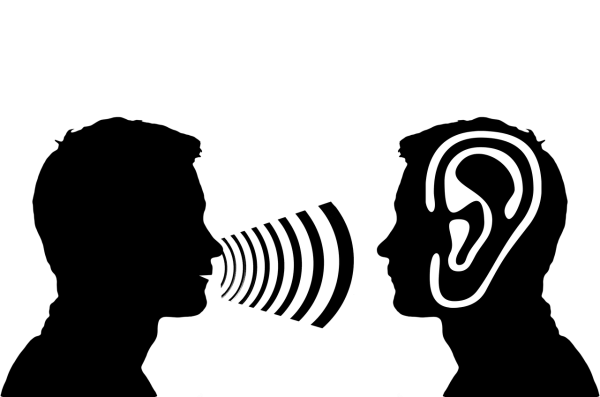Mastering Active Listening: Tips and Techniques for Effective Communication
Have you ever felt like you’re speaking, but no one is really listening? That’s because listening, like any other skill, requires effort and practice. Active listening is a potent form of engagement that can transform conversations, deepen relationships, and enhance understanding. In this article, we’ll delve into the active listening definition, explore what makes it so vital, and provide practical ways to develop your active listening skills through examples and exercises.

Table of Contents
What is Active Listening?
![]()
Active listening is more than just hearing the words being said; it’s about fully concentrating, understanding, responding, and then remembering what is being spoken. It’s a dynamic process that involves being present and engaged with the speaker, showing empathy, and providing feedback that assures them their message has been received.
Why is Active Listening Important?
![]()
Active listening serves as the cornerstone of effective communication. It helps to avoid misunderstandings, builds trust, and creates a safe environment where ideas and feelings can be exchanged openly. By actively listening, you show respect for the speaker, which can strengthen personal and professional relationships. It’s a critical skill for leaders, educators, counselors, and anyone who seeks to connect with others on a deeper level.
Core Active Listening Skills
![]()
Developing active listening skills involves a range of practices. Here are some key components:
- Pay Attention: Give the speaker your undivided attention. This means putting aside distracting thoughts and focusing solely on what’s being said.
- Show That You’re Listening: Use body language and gestures to show engagement, such as nodding, maintaining eye contact, and leaning slightly forward.
- Provide Feedback: Reflect on what has been said by paraphrasing or summarizing. Ask questions to clarify certain points and encourage further explanation.
- Defer Judgment: Allow the speaker to finish each point before asking questions or offering opinions. Avoid interrupting with counter-arguments or analysis.
- Respond Appropriately: Be candid, open, and respectful in your response. Assert your opinions respectfully and acknowledge the speaker’s perspective.
Active Listening Examples in Practice
![]()
Active listening can be applied in various scenarios, from a manager giving feedback to an employee, to a doctor consulting with a patient. Let’s look at a few examples:
- In a work setting: An employee is sharing a complex problem they’re facing. An active listener would not only absorb the information but also ask clarifying questions and restate the issue to ensure a mutual understanding before suggesting solutions.
- In personal relationships: A friend might be expressing concerns about their relationship. You can show active listening by acknowledging their feelings, summarizing their worries, and asking how you can support them, rather than immediately offering advice.
- During conflict resolution: When two parties disagree, active listening can help each side understand the other’s perspective. It involves restating the other’s position and feelings, which can pave the way for finding common ground.
Active Listening Techniques to Enhance Understanding
![]()
To enhance your active listening ability, consider employing these techniques:
- Mirroring: Imitate the speaker’s body language subtly. This can build rapport and show empathy without using words.
- Paraphrasing: Restate what the speaker has said in your own words to show you have grasped the content.
- Emotional Labeling: Identify and name the speaker’s feelings to demonstrate understanding on an emotional level.
- Summarizing: Offer a brief summary of the main points discussed to confirm that you have captured the essence of the conversation.
- Questioning: Ask open-ended questions that encourage the speaker to elaborate and express themselves more fully.
Active Listening Exercises to Sharpen Your Skills
![]()
Here are some exercises you can practice to improve your active listening skills:
- The Repetition Game: Partner with someone and have them tell you a story. Your task is to repeat the story back to them, capturing the main points and emotions. This will train you to listen for details and feelings.
- Non-Verbal Feedback Challenge: Have a conversation without speaking. Use only your body language to communicate that you are listening and understanding. This can help you become more aware of non-verbal cues.
- The Distraction Test: Try to have a conversation in a noisy place or while doing something else. Focus on maintaining concentration on the speaker, which will help improve your ability to listen actively in challenging environments.
- Role-Playing: Engage in role-playing exercises where you play the part of the listener. This can help you practice active listening in a variety of scenarios and with different types of speakers.
Active Listening in a Digital Age
![]()
With the rise of digital communication, active listening has taken on a new dimension. It’s not just about face-to-face interaction; it’s about how we listen and engage in virtual meetings, phone calls, and even written communications like emails. Here, active listening might involve reading carefully, asking insightful questions, and providing thoughtful responses that indicate you’ve digested the information.
Frequently Asked Questions
![]()
What is active listening?
Active listening is when you listen to someone with full attention, understanding their message, and responding thoughtfully. It means not just hearing their words, but also noticing their tone and body language, and showing that you are engaged.
How can I show someone I’m actively listening?
You can show you’re actively listening by nodding, maintaining eye contact, and giving small verbal cues like “uh-huh” or “I see.” Also, you can repeat back or summarize what they’ve said to show you understand.
Why is active listening important?
Active listening is important because it helps you understand people better, build trust, and avoid misunderstandings. It’s a key skill in personal and professional relationships, and it can also make others feel valued and heard.
Can active listening be learned?
Yes, active listening can be learned with practice. It involves developing habits like focusing on the speaker, avoiding interruptions, and asking questions to clarify. Like any skill, the more you do it, the better you get.
What’s the difference between active and passive listening?
Passive listening is when you hear the words someone is saying but don’t engage with the message. Active listening, on the other hand, involves fully engaging with the speaker, understanding their message, and responding thoughtfully.
How do I practice active listening?
To practice active listening, try to focus fully on the speaker, avoid distractions, and refrain from planning what to say next while they’re talking. Also, work on being empathetic and open-minded to what they are saying.
What are some barriers to active listening?
Barriers to active listening can include distractions, like noise or your phone, as well as internal factors like stress or preconceived ideas about the speaker. Overcoming these barriers involves managing your environment and your mindset.
How can I improve my active listening skills in a noisy environment?
In a noisy environment, try to minimize distractions by moving to a quieter place if possible. Focus closely on the speaker’s words, watch their lips and facial expressions, and ask for clarification if you miss something.
What should I avoid when trying to listen actively?
When trying to listen actively, avoid interrupting, giving advice too quickly, or thinking about your response while the other person is still talking. Also, try not to jump to conclusions or make assumptions.
How do I respond to someone when I’m actively listening?
When responding to someone as an active listener, use phrases that show you’ve understood, like “What I’m hearing is…” or “It sounds like you’re saying…” You can also ask questions to clarify or learn more, and offer feedback or thoughts if they’re open to it.
Conclusion: The Lasting Impact of Active Listening
![]()
Active listening is a skill that reaps long-term benefits for anyone willing to put in the effort. It enriches relationships, enhances problem-solving abilities, and fosters an environment of mutual respect and understanding. By using the active listening techniques and exercises outlined above, you can begin to hone a skill that will serve you well in every aspect of your life.
Remember, active listening isn’t just about being quiet while someone else speaks; it’s an active, participatory process. It’s about being present, engaged, and responsive. It’s a commitment to understanding and valuing the perspectives of others. With practice, active listening can transform the way you communicate, leading to more meaningful interactions and connections. So, the next time someone speaks to you, give them the gift of your full attention—it’s one of the most powerful things you can do.
Originally posted 2023-04-22 19:40:35.
